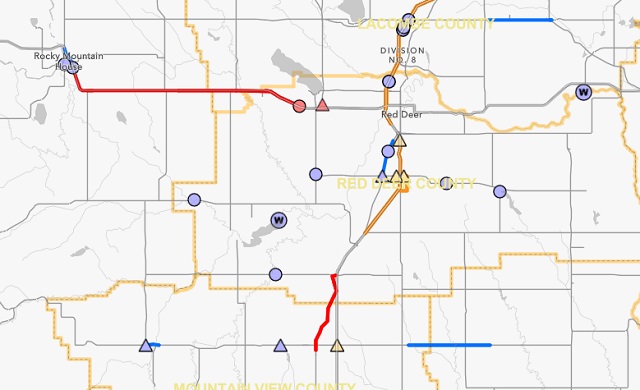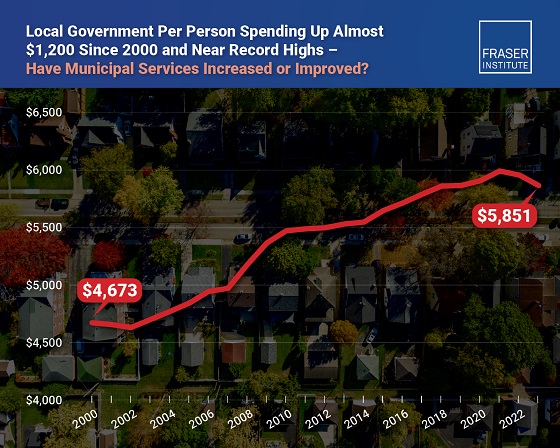Alberta
Highway 11 to be twinned from Sylvan Lake to Rocky Mountain House

Major highway upgrades keep Alberta moving
Budget 2024 includes $1.9 billion for planning, design and construction of major highway and bridge projects.
Alberta Transportation and Economic Corridors is investing in the provincial highway network to keep Albertans safe and on the move, now and into the future.
This investment enhances Alberta’s competitive advantage by building and improving our economic corridors to provide vital links to markets in and out of Alberta. These projects will increase the safety and efficiency of our provincial highway network, ensuring Albertans spend less time stuck in traffic and more time doing the things they love.
“Alberta’s highways connect families and friends and get local products to market. We all count on well-built roads to get where we need to go, and that is why we are investing in major upgrades to our road and bridge network. With smoother and more efficient traffic flows, families can spend less time on the road and more time together.”
Investing in upgrades to the provincial road and bridge network creates thousands of jobs, improves traffic flows and supports the development of the province’s major economic corridors. These investments in key projects are vital to ensuring communities across the province have the infrastructure needed to get their goods to new markets and to support the higher traffic counts that come with a growing population.
“Alberta is the fastest-growing province in Canada, so it’s imperative we get to work today planning, designing and building the highways and bridges we need for tomorrow. This investment from the Government of Alberta will strengthen the province’s transportation network and expand our economic corridors so we can build our businesses, boost our exports, and create good-paying jobs.”
As the province continues to grow, so does the need for new and improved highways to get more people and goods to their destination. Expanding Alberta’s economic corridors keeps the province connected, strengthens supply chains, and is important for economic growth and diversification. These investments will enhance Alberta’s competitive advantage, making it easier to transport goods in and out of the province.
By investing in highways and bridges, Alberta’s government is not just improving transportation; but also laying the groundwork for a stronger, more connected Alberta, ensuring prosperity for generations to come.
“ACC is supportive of the capital investments the province is making in major corridors across Alberta, including Highway 3. Improving our economic corridors is critical in ensuring we have stronger supply chains and more efficient movement of goods and people.”
“Strengthening and expanding economic corridors is a strategic priority for the EMRB. By working together, our 13 member municipalities are finding efficiencies so we can ensure people and goods can move seamlessly to, from and throughout the region. The EMRB would like to thank the Government of Alberta for its significant investment in this critical work. As the province’s population approaches five million, transportation networks have never been more important.”
Projects across the province that are receiving funding include:
- Highway 3 twinning, Taber to Burdett
- Highway 11 twinning, Sylvan Lake to Rocky Mountain House
- Safety and road improvements on Highway 881
- The Highway 22/1A interchange at Cochrane
- Highway 40 Twinning, south of Grande Prairie
- Highway 201 Bow River Bridge on southeast Stoney Trail
- Deerfoot Trail upgrades
- Terwillegar Expansion
Budget 2024 also looks to the future by investing $151.2 million over three years for 56 engineering projects, with $100 million in new funding over three years for 36 engineering projects to address future infrastructure needs as our province continues to grow. This will fund projects such as:
- Highway 60 capital improvements
- Highway 40 grade widening between Hinton and Grande Cache
- New intersection/alignment at Highway 16A and Range Road 20
- Highway 2 Balzac Interchange Replacement
- Highway 63 twinning, north of Fort McMurray
- Vinca Bridge replacement
Budget 2024 is a responsible plan to strengthen health care and education, build safe and supportive communities, manage the province’s resources wisely and promote job creation to continue to build Alberta’s competitive advantage.
Key Facts
- Alberta has a vast provincial highway network that includes more than 64,000 lane kilometres of highways, of which about 58,000 lane kilometres are paved.
- The province has more than 4,800 bridge structures, including river crossing bridges, overpasses and culverts.
More Information
Alberta
Alberta Provincial Police – New chief of Independent Agency Police Service

Sat Parhar has been appointed as the first chief of the Independent Agency Police Service, marking the next step toward a new municipal policing option.
The appointment of a new chief for the Independent Agency Police Service (IAPS) marks the next step in giving municipalities a new option for local policing and builds on the work already underway for the agency to assume the police-like duties currently carried out by the Alberta Sheriffs. The IAPS will empower municipalities to adopt strategies that effectively respond to their specific safety concerns, enhancing public safety across the province.
Chief Parhar brings more than 25 years of policing experience, including senior roles with the Calgary Police Service, most recently as deputy chief. His frontline policing experience and deep understanding of Alberta’s complex and diverse public safety landscape positions him to lead the agency as it takes shape and begins its work as a new municipal policing option, keeping communities safe.
Once operational, the agency will strengthen Alberta’s existing policing model and complement the province’s current police services, which includes the RCMP, Indigenous policing services and municipal police. It will help fill gaps and ensure law enforcement resources are deployed efficiently to meet Alberta’s evolving public safety needs and improve law enforcement response times, particularly in rural communities.
“Appointing Chief Sat Parhar is a key milestone in Alberta’s plan to give municipalities a real choice in how their communities are kept safe. This is about building a modern police service that reflects the priorities of Albertans, strengthens local decision-making, and ensures every corner of our province, especially rural areas, can count on responsive, effective law enforcement. With his decades of experience and deep understanding of Alberta’s policing landscape, he is the right leader to bring this vision to life.”
“This appointment signifies a significant step forward in our efforts to establish a more robust, community-focused policing model that is better equipped to meet the unique needs of our local residents. Under Chief Parhar’s visionary leadership, we are confident that we will develop a modern, efficient police service that not only enhances public safety but also aligns closely with the priorities and values of Albertans. His experience and commitment are vital in shaping an IAPS that is responsive, transparent, and dedicated to fostering trust and collaboration within the community, ultimately ensuring a safer and more connected society for all.”
Chief Parhar’s immediate priorities will be to hire an executive team and commence organizational planning such as developing key recruitment, training and other operational policies. Chief Parhar’s appointment is the first step of many to establishing the IAPS.
“It’s an honour to take on this role and help shape a modern police service built for Alberta. My focus from day one will be on setting high standards for professionalism, building strong relationships with our partners and ensuring this service reflects the needs and priorities of the communities we serve.”
The Independent Agency Police Service was formally created through regulation following the passing of Public Safety Statutes Amendment Act, 2024. The agency will operate as an independent Crown corporation, and will be renamed the Alberta Sheriffs Police Service, with its head office located in Calgary. The IAPS will be operationally independent from the provincial government with civilian oversight, consistent with all police services in Alberta.
“When it comes to policing, municipalities like ours deserve a choice – especially when the current system leaves us disadvantaged simply because of our size. We look forward to learning more about what that alternative will look like once an Alberta police agency is fully established and the options are clear. For us, this is about fairness, sustainability, and ensuring municipalities have access to policing solutions that reflect both their needs and their realities.”
Quick facts
- The regulation establishes the IAPS Provincial Corporation and its governance structure including board of directors, board of director powers, financial responsibilities and accountabilities.
Related news
- Expanding municipal police service options (April 7, 2024)
Alberta
Pierre Poilievre – Per Capita, Hardisty, Alberta Is the Most Important Little Town In Canada

From Pierre Poilievre
-

 Business2 days ago
Business2 days agoOttawa Funded the China Ferry Deal—Then Pretended to Oppose It
-

 COVID-192 days ago
COVID-192 days agoNew Peer-Reviewed Study Affirms COVID Vaccines Reduce Fertility
-

 MAiD2 days ago
MAiD2 days agoCanada’s euthanasia regime is not health care, but a death machine for the unwanted
-

 Alberta2 days ago
Alberta2 days agoThe permanent CO2 storage site at the end of the Alberta Carbon Trunk Line is just getting started
-

 Business2 days ago
Business2 days agoWorld Economic Forum Aims to Repair Relations with Schwab
-

 Alberta2 days ago
Alberta2 days agoAlberta’s government is investing $5 million to help launch the world’s first direct air capture centre at Innisfail
-

 Business2 days ago
Business2 days agoMunicipal government per-person spending in Canada hit near record levels
-

 Business2 days ago
Business2 days agoA new federal bureaucracy will not deliver the affordable housing Canadians need





